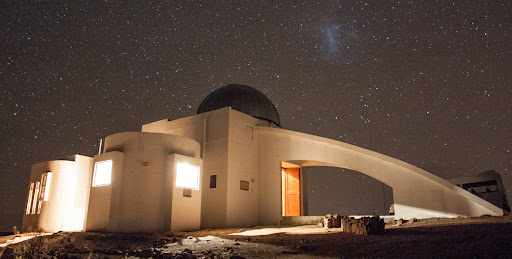Chile’s geographic conditions make it a natural laboratory, perfect for scientific research and astronomical observation, because it has one of the clearest skies in the world. For this reason, today in Chile you can find more than forty observatories that, with different degrees of precision and depth, help decipher the oldest enigmas in the Universe.
But the natural conditions of Chilean skies and the shocking phenomena captured by the multiple telescopes located in the country attract the attention not only of scientist, but also of a growing number of tourists, both foreign and domestic. Astronomical tourism has gained importance since 1998 – year in which Mamalluca opened, the first tourist observatory in the country and still the most recognized and visited of its kind -, and is today one of the areas of tourism with more growth potential in the country.
Astrotourism has become one of the main motivations for foreign tourists to visit Chile, since its conditions and the chances of sighting astronomical phenomena cannot be compared with. At the same time, Chilean tourists are increasingly interested in knowing more about this area of scientific development, making visits to observatories a must in their trips to northern Chile. For these reasons, the country seeks to be the most outstanding destination for astrotourism in 2025.
One of the main characteristics of the growing astrotoursim in Chile is the variety of options. For those more interested in learning about the scientific development, it is possible to visit some of the most important international projects located in northern Chile, such as ALMA or the Paranal Observatory, who organize tours of their control centres. On the other hand, if what you want is to learn, but also observe and admire astronomical phenomena, you can visit one of the more that thirty tourist observatories in Chile.
Here you will find a list with the 35 tourist and the 13 scientific observatories in the country, sorted by region, north to south:
Antofagasta
This region has the largest number of scientific observatories, among which ALMA and Paranal Observatory stand out, both created thanks to international investments. To those projects, you can add the UCN Observatory (former Sirius Observatory), of the Universidad Católica del Norte and the Ckoirama and Nayra observatories, both owned by the Universidad de Antofagasta. The tourist observatories are:
- Escuela Baquedano Observatory (Sierra Gorda)
- Ahlarkapin Observatory (San Pedro de Atacama)
- Paniri Caur Observatory (Calama)
- SPACE Observatory (San Pedro de Atacama)
Atacama
The Atacama region has one observatory of each kind. Las Campanas is the scientific observatory, while the tourist observatory is called Inca de Oro
- Inca de Oro Observatory (Diego de Almagro)
Coquimbo
The region with the most observatories in Chile has fifteen tourist observatories, and three scientific ones: Cerro Tololo, La Silla and Gemini-Sur
- Collowara Observatory (Ancadollo)
- Cruz del Sur Observatory (Combarbalá)
- Mamalluca Observatory (Vicuña)
- Solar Observatory of Chile (Vicuña)
- Antilhue Observatory (Ovalle)
- Cancana Observatory (Vicuña)
- Cielo Sur Observatory (Paihuano)
- El Pangue Observatory (Vicuña)
- Chakana Observatory (Paihuano)
- Cerro Mayu Observatory (La Serena)
- Alfa Aldea Observatory (Vicuña)
- Hacienda Los Andes Observatory (Río Hurtado)
- Valle del Sol Observatory (Monte Patria)
- Refugio El Molle Observatory and Astronomic Spa (El Molle)
- Inti Runa Observatory (Vicuña)
Valparaíso
The Valparaíso region has no scientific observatories, but it does have two tourist ones:
- Galileo Galilei Observatory (Valparaíso)
- Pocuro Observatory (Calle Larga)
Metropolitan Region
In this region we can find three scientific observatories: the UMCE Observatory, Manuel Foster Observatory in the Metropolitan Park and the National Astronomical Observatory on Cerro Calán (the last two were key for the beginnings of astronomy in Chile). There are also five tourist observatories:
- Andean Astronomical Observatory (Lo Barnechea)
- Pailalén Observatory (San José de Maipo)
- Chilean Skies Observatory in Chicureo (Colina)
- Cerro El Pochoco Observatory (Lo Barnechea)
- Roan Jasé (San José de Maipo)
O’Higgins
The O’Higgins region adds two tourist observatories to the list:
- Tagua Tagua Observatory (San Vicente de Tagua-Tagua)
- Cerro Chamán Observatory (Lolol)
Maule
This region only has one observatory:
- Orión Observatory (Villa Alegre)
Bio Bío
The Universidad de Concepción has one scientific observatory called Wangulen Mapu, but in this region we can also find four tourist observatories:
- Shankri-La Skies Observatory (Pinto)
- Yepún Observatory (Cañete)
- Antares Amateur Astronomical Observatory (Talcahuano)
- Elke Tourist Observatory (Penco)
Los Lagos
Chile’s tenth region is home to just one tourist observatory:
- Astronomy Academy San Francisco Javier School


